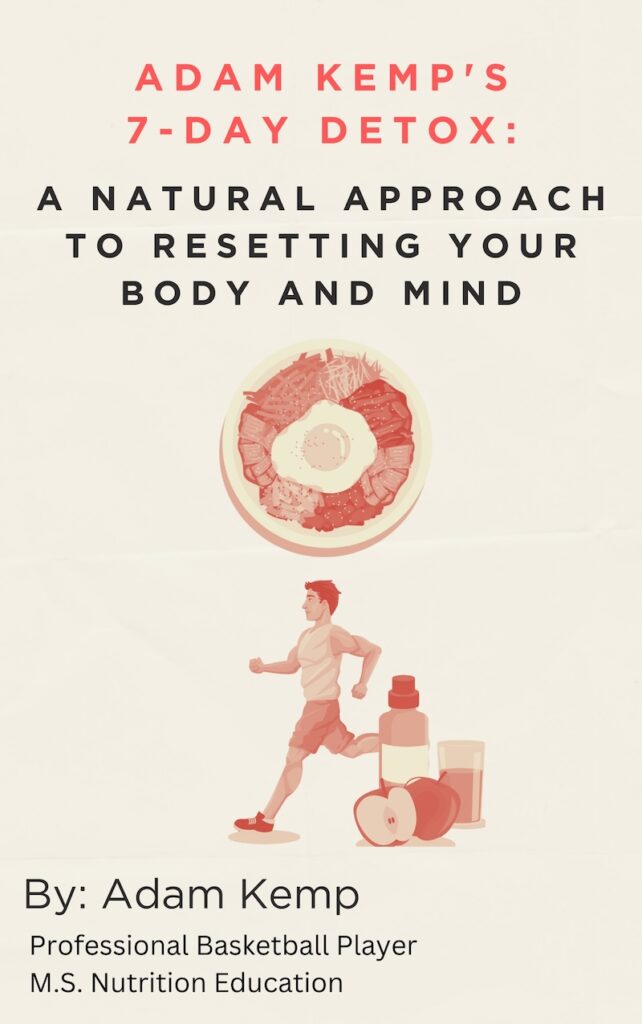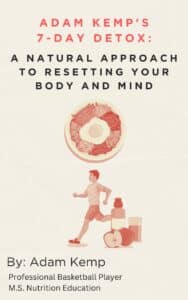DIY Joint Pain Relief Tips: How to Reduce Joint Pain at Home
Joint pain can disrupt your life, making simple activities feel like monumental challenges.
Whether due to injury, inflammation, or chronic conditions like arthritis, addressing joint discomfort is critical to regaining mobility and improving your quality of life.
As a professional basketball player for over a decade, I’ve experienced firsthand the toll repetitive movements, physical stress, and injuries take on joint health.
From managing sprains, strains, and inflammation to overcoming long-term issues with my knees, shoulders, and ankles, I’ve cultivated a unique perspective on managing joint pain effectively.
This guide combines personal experience with evidence-based strategies to provide actionable, DIY joint pain relief solutions you can implement today.
Understanding the causes of joint pain is key to choosing the right remedies, as common culprits include inflammation, overuse, injury, or degenerative conditions like osteoarthritis.
Lifestyle factors, such as poor posture, lack of flexibility, or inadequate recovery, can also exacerbate joint discomfort, but proper care and targeted interventions can alleviate symptoms and promote long-term joint health.
By incorporating these DIY joint pain remedies into your daily routine, you can empower yourself to take control of your joint health.
These solutions go beyond quick fixes, offering a holistic approach to reducing discomfort, enhancing mobility, and improving overall wellness.
Whether you’re dealing with minor aches or chronic stiffness, these strategies aim to help you move better, feel better, and live more actively.
What Causes Joint Pain?
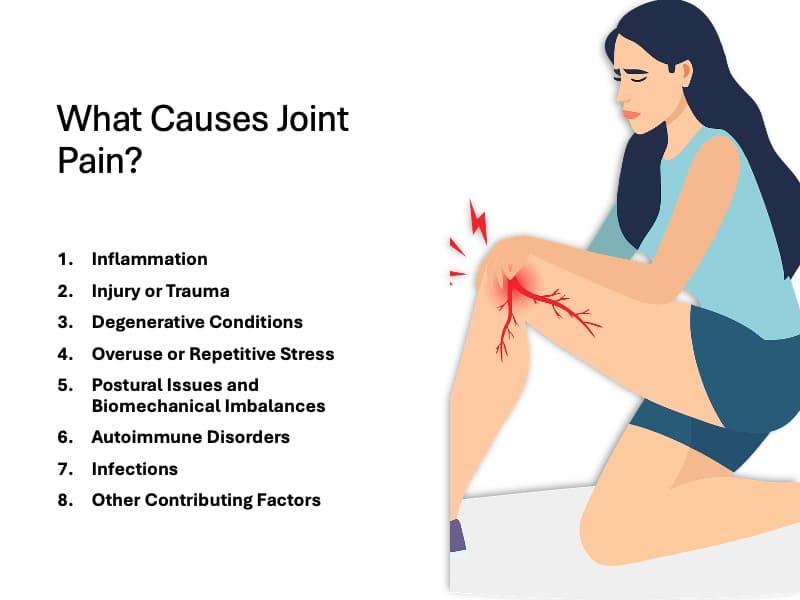
Joint pain can stem from a wide array of factors, ranging from acute injuries to chronic health conditions. Understanding the root causes is essential for effectively managing and relieving discomfort.
By identifying the underlying cause of joint pain, you can tailor a management plan that addresses the root issue rather than simply masking the symptoms.
For example, as a professional basketball player, I’ve had to overcome joint pain from both acute injuries and repetitive stress.
Understanding the source of the pain—whether it was inflammation from a sprained ankle or the wear and tear of osteoarthritis—allowed me to apply targeted solutions, from anti-inflammatory techniques to strength and mobility exercises.
Below are some of the most common causes of joint pain:
1. Inflammation
Inflammation is a natural immune response to injury or irritation, but chronic inflammation can contribute to persistent joint pain. Conditions like rheumatoid arthritis or gout cause inflammatory responses in the joints, leading to swelling, stiffness, and discomfort.
2. Injury or Trauma
Acute injuries, such as sprains, strains, dislocations, or fractures, can directly damage the joint or the surrounding ligaments, tendons, and cartilage. Over time, repetitive microtraumas—common in athletes and physically active individuals—may also contribute to joint degeneration and pain.
3. Degenerative Conditions
Degenerative joint diseases, such as osteoarthritis, occur when the cartilage cushioning the joints wears down over time. This leads to bone-on-bone friction, causing pain, stiffness, and reduced mobility. Aging is a major risk factor, but overuse and genetics can accelerate this process.
4. Overuse or Repetitive Stress
Repetitive movements, whether from physical activity, occupation, or improper exercise techniques, can strain joints and surrounding tissues. This is especially common in athletes, whose high-impact activities frequently target specific joints.
5. Postural Issues and Biomechanical Imbalances
Poor posture, improper gait, or muscle imbalances can place uneven stress on the joints, leading to pain over time. For example, flat feet or weak gluteal muscles may contribute to knee and hip pain by altering movement patterns.
6. Autoimmune Disorders
Autoimmune conditions like lupus or rheumatoid arthritis cause the body’s immune system to attack healthy tissues, including joints. These disorders often result in widespread joint pain, stiffness, and inflammation.
7. Infections
Joint infections, such as septic arthritis, occur when bacteria, viruses, or fungi invade the joint space. This can cause severe pain, swelling, and fever and requires immediate medical attention.
8. Other Contributing Factors
- Obesity: Excess weight places additional stress on weight-bearing joints like the knees, hips, and ankles.
- Lifestyle Factors: Sedentary habits, poor diet, and lack of recovery after exercise can contribute to joint pain.
- Mental Health: Stress and depression can amplify the perception of joint pain and contribute to chronic discomfort.
Best DIY Joint Pain Relief Remedies
In this section, we’ll explore practical, DIY strategies for relieving joint pain at home, many of which are inspired by my personal experiences managing joint health as an athlete.
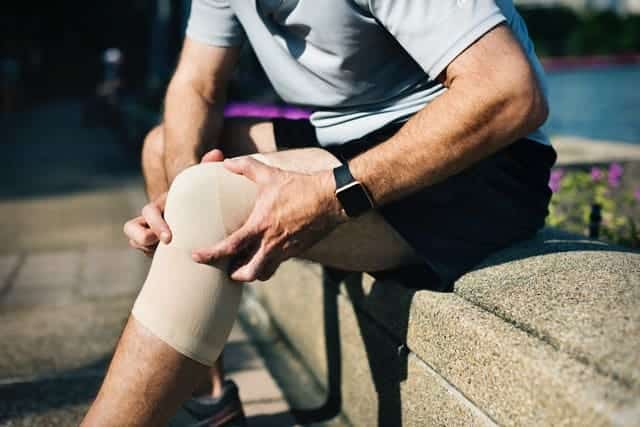
1.) Hot and Cold Therapy
Hot and cold therapy is a time-tested, first-line treatment for DIY joint pain relief, offering simple yet effective ways to alleviate discomfort and improve mobility.
Starting your day with a warm shower, for instance, can help reduce morning stiffness, enabling you to move more freely and with less pain.
Heat increases blood flow by dilating blood vessels, delivering oxygen and nutrients to the affected area, which helps reduce stiffness and improves your range of motion.
It also relaxes the muscles surrounding the joint, offering immediate relief from tension and discomfort.
Cold therapy, on the other hand, is a reliable solution for reducing inflammation and swelling in painful joints.
Applying an ice pack or cold compress constricts blood vessels, minimizing blood flow to the area and calming inflammation.
The cooling effect also numbs nerve endings, providing relief from pain and discomfort while improving mobility by reducing swelling and stiffness.
For an added edge, consider combining both treatments with contrast therapy, which alternates between hot and cold applications.
A contrast shower (alternating between warm and cold water every 2–3 minutes) is a practical way to achieve this effect at home.
For those dealing with persistent knee pain, advanced tools like the Hyperice X provide an innovative solution by seamlessly switching between hot and cold treatments, delivering targeted relief with minimal effort.
Last update on 2025-04-15 / This article includes affiliate links/Images via Amazon Product Advertising API. I may earn commissions on purchases made through these links.
Whether you prefer a warm bath, a heating pad, an ice pack, or a cutting-edge device, hot and cold therapy remains one of the most accessible and impactful methods for managing joint pain.
Integrating this technique into your routine can improve comfort, mobility, and overall joint health.
Last update on 2025-04-15 / This article includes affiliate links/Images via Amazon Product Advertising API. I may earn commissions on purchases made through these links.
Research indicates that ice can be an effective treatment for joint pain relief because it helps to reduce inflammation and swelling.
Applying ice to an injured or painful joint causes the blood vessels in the area to constrict, reducing blood flow to the area, which helps reduce swelling and inflammation.
Furthermore, the cold temperature of the ice can numb the nerve endings in the area, which can help to reduce pain and discomfort.
Lastly, ice can help to reduce stiffness and improve the range of motion in the affected joint.
Applying ice to a painful joint can help reduce pain, swelling, and stiffness and improve your ability to move and function.
To perform hot and cold therapy, you can use hot or cold compresses, heating pads, baths, or showers.
Contrast showers involve varying the temperature of your shower for 2-3 minutes at a time.
If you have knee pain, the Hyperice X is a top-of-the-line treatment that can change between hot and cold treatments.
Last update on 2025-04-15 / This article includes affiliate links/Images via Amazon Product Advertising API. I may earn commissions on purchases made through these links.
If you have a limited budget, these hot and cold compresses can be effective:
Last update on 2025-04-15 / This article includes affiliate links/Images via Amazon Product Advertising API. I may earn commissions on purchases made through these links.
2.) Strength Training & Physical Rehabilitation
Although exercise may sound like the antithesis of DIY joint pain relief, exercise has been shown to help reduce joint pain and promote a healthier body overall.
Unlike short-term fixes, these approaches address the root causes of joint discomfort, offering a long-term solution that improves overall health and mobility.
Additionally, research indicates that range of motion, strengthening, and aerobic conditioning exercises are safe for patients with osteoarthritis, rheumatoid arthritis, and other types of joint pain, despite previous concerns that exercise might exacerbate joint pain.
Proper physical therapy often combines targeted strength training, mobility exercises, and aerobic conditioning.
These elements work together to alleviate joint pain by improving muscle support around the joints, increasing flexibility, and enhancing circulation to reduce inflammation.
Strength Training
Strengthening weak areas and correcting biomechanical imbalances can significantly reduce stress on the joints, leading to lasting pain relief.
For example, doing strength training workouts that include the best exercises for knee pain can improve your knee joint and several other parts of lower-body mechanics and lower-body joint pain.
Similarly, mobility exercises, which focus on increasing joint range of motion, play a vital role in alleviating pain.
My YouTube channel features a variety of mobility exercises, particularly for athletes, that can help anyone dealing with joint pain.
For example, my hip mobility exercises are highly effective for addressing hip and lower back pain, as they target tight and overworked areas.
Aerobic Conditioning
Lastly, aerobic exercises such as swimming, cycling, and walking are excellent options for improving overall cardiovascular health while reducing joint stiffness.
Targeted Exercise Interventions
In many cases, consulting a physical therapist or qualified professional is essential for creating a personalized exercise plan.
They can assess your specific needs, guide you on proper technique, and ensure your program evolves as your body adapts.
By investing time in physical therapy and prioritizing proper body mechanics, you can achieve sustainable joint pain relief, improve your quality of life, and regain confidence in your daily movements.
While these methods may require patience and consistency, the long-term benefits make them the optimal solution for managing joint pain.
3.) Supplements for Joint Pain
There are a variety of dietary supplements for joint pain that are effective and can promote your overall long-term health as well.
Your goal should be to eat a diet that consists of all the nutrients you need for a healthy body, but sometimes it is not possible. Also, some vitamins, minerals, and other compounds are better in supplement form.
Here are a few of the best supplements for joint pain relief:
Magnesium
Magnesium is involved in many important bodily functions, including muscle and nerve function, energy production, and bone health.
Magnesium supplements are one of the best DIY joint pain remedies because magnesium plays a key role in maintaining healthy bones and muscles.
Inadequate magnesium levels can lead to muscle cramps, weakness, and pain, so taking magnesium supplements can help to ensure that your body has adequate levels of this important mineral, which can help to reduce muscle pain and improve overall joint health.
In addition, magnesium supplements can help to reduce inflammation, which can further alleviate joint pain and discomfort.
Overall, magnesium supplements can provide joint pain relief and improve your overall health and well-being.
For joint pain relief, Rootcha’s Magnesium & Zinc and Qunol Magnesium Glycinate are two of my top choices.
Rootcha’s Magnesium & Zinc combines magnesium with zinc, an essential mineral for immune system support and overall recovery.
The inclusion of zinc enhances magnesium’s effectiveness in reducing inflammation and promoting joint health, making it a versatile supplement that supports both musculoskeletal and immune function.
Last update on 2025-04-15 / This article includes affiliate links/Images via Amazon Product Advertising API. I may earn commissions on purchases made through these links.
Qunol Magnesium Glycinate is an excellent choice for those seeking a highly bioavailable form of magnesium. Magnesium glycinate is one of the most easily absorbed forms of magnesium, making it gentle on the stomach while maximizing muscle and joint support.
This formula is particularly effective in reducing muscle tension and promoting relaxation, which can further alleviate joint pain.
Last update on 2025-04-15 / This article includes affiliate links/Images via Amazon Product Advertising API. I may earn commissions on purchases made through these links.
Choosing a high-quality supplement like Rootcha’s Magnesium & Zinc or Qunol Magnesium Glycinate supports muscle function, reduces inflammation, and enhances recovery—making it a key addition to any joint pain management plan.
Collagen
Collagen is a protein in the body’s connective tissues, including the joints. Also, collagen is a key component of cartilage, the tissue that cushions the joints and allows them to move smoothly.
As we age, the body’s natural collagen production decreases, leading to joint pain and stiffness.
Collagen supplements help promote the body’s collagen production, which is essential for healthy cartilage and joints.
Collagen is an especially important supplement for runners or other active people who have joint pain due to too much physical activity.
According to a study published in Current Medical Research and Opinion, athletes treated with the dietary supplement collagen hydrolysate showed reduced joint pain and improved joint health in a 24-week trial.
Additionally, as shown in a study published in the Nutrition Journal, Type-2 collagen supplements (like BioCell Collagen) are effective for treating knee osteoarthritis pain and its associated symptoms.
If you want to try a collagen supplement for joint pain, I believe Vital Protein Collagen Peptides is the best option because it combines collagen and hyaluronic acid.
Last update on 2025-04-15 / This article includes affiliate links/Images via Amazon Product Advertising API. I may earn commissions on purchases made through these links.
If you’d like a slightly more affordable option, I suggest you choose Purely Inspired Collagen Peptides.
Last update on 2025-04-15 / This article includes affiliate links/Images via Amazon Product Advertising API. I may earn commissions on purchases made through these links.
Turmeric
Turmeric is a popular natural remedy for various conditions, including joint pain.
Turmeric is a great DIY joint pain remedy because it contains a compound called curcumin, which has anti-inflammatory and antioxidant properties.
When taken as a supplement, turmeric can help to reduce inflammation and swelling in the joints, which can alleviate pain and stiffness.
Turmeric has been used for joint pain relief for thousands of years, and recent Randomized Clinical Trials (RCTs) provide scientific evidence that supports the efficacy of turmeric in the treatment of arthritis and joint pain.
There are many good turmeric supplements, but my suggestion due to cost and quality is NatureWise Turmeric & Ginger:
Last update on 2025-04-15 / This article includes affiliate links/Images via Amazon Product Advertising API. I may earn commissions on purchases made through these links.
Fish Oil
Another excellent supplement for joint pain is fish oil. Fish oil contains omega-3 fatty acids, which help reduce inflammation throughout the body, amongst other health benefits.
Omega-3 fatty acids reduce inflammation by suppressing the production of pro-inflammatory compounds, such as cytokines and prostaglandins.
Also, omega-3 fatty acids help to increase the production of anti-inflammatory compounds, such as eicosanoids.
By consuming omega-3 fatty acids from fish oil supplements, you help to balance the levels of pro- and anti-inflammatory compounds in the body and reduce inflammation.
Fatty fish is the best source of omega-3 fatty acids, and research indicates that fish oil supplements are an effective way to consume enough fish oil to reduce inflammation and joint pain.
Some research indicates that fish oil supplements can be as effective as ibuprofen for reducing certain types of musculoskeletal pain.
After researching various fish oil supplements, I believe the best for joint pain relief is MAV Nutrition Omega 3 Fish Oil.
MAV Nutrition Omega 3 Fish Oil contains with 3,600mg of fish oil fatty acids, including 864 mg of DHA, 1,296 mg of EPA per serving. MAV Nutrition Omega 3 Fish Oil is a “burpless” fish oil supplement.
Last update on 2025-04-15 / This article includes affiliate links/Images via Amazon Product Advertising API. I may earn commissions on purchases made through these links.
4.) Anti-Inflammatory Diet for Joint Pain
Chronic joint pain is caused or aggravated by inflammation, and eating an anti-inflammatory diet is one of the best DIY joint pain remedies.
There are many different diets for joint pain relief, but they all have the foundational principle of reducing inflammation in the body.
Some of the best diets for joint pain relief include:
- The Mediterranean Diet
- The Arthritis Foundation Anti Inflammatory Diet
- Diets that Avoid Refined Sugars and Carbohydrates
- Vegetarian/Vegan Diets
Some examples of foods that you can consume to help reduce inflammation in the body include:
- Fruits and vegetables
- Fatty fish (salmon, mackerel, sardines)
- Nuts and seeds (almonds, walnuts, and chia seeds)
- Extra virgin olive oil
- Whole grains (quinoa, oats, and brown rice)
- Turmeric and other herbs and spices (ginger, cinnamon, and garlic)
Consuming an anti-inflammatory diet will reduce joint pain at its root cause and help you live a more pain-free life.
5.) Mindfulness and Meditation
While mindfulness or meditation alone may not directly reduce joint pain, it can be a helpful tool for managing pain and improving overall well-being.
Research indicates that mindfulness and meditation can help reduce stress and improve relaxation, which can, in turn, help reduce pain and discomfort.
Additionally, meditation can help improve focus and concentration, making it easier to deal with pain.
Some studies have also suggested that meditation can help reduce inflammation in the body, which can positively impact conditions such as arthritis.
However, more research is needed to determine the exact effects of meditation on joint pain.
If you’re interested in using meditation to help manage joint pain, there are many meditation techniques and approaches to choose from. It may be helpful to try a few different techniques to see what works best for you.
Headspace is a popular meditation app that many people find beneficial.
7.) Self-Massage and Passive Recovery Tools
Incorporating self-massage and passive recovery tools into your routine can significantly alleviate joint pain and enhance overall mobility.
These methods promote muscle relaxation, improve circulation, and reduce inflammation, offering both immediate relief and long-term benefits.
Moreover, combining self-massage techniques with passive recovery tools can optimize joint pain management.
For example, using a foam roller to release tight muscles, followed by applying a DIY Cupping device, can provide comprehensive relief to a muscle group, thus reducing joint pain.
However, it’s advisable to consult with a healthcare professional before starting any new self-massage or passive recovery treatment to ensure it’s appropriate for your specific condition.
When done properly, incorporating these practices into your daily routine can lead to significant improvements in joint health and overall well-being.
Self-Massage Techniques
Self-massage involves applying pressure to muscles and soft tissues to relieve tension and pain.
Techniques such as using your hands to knead tight muscles or employing self-massage tools like foam rollers can effectively target specific areas.
For instance, gently massaging the neck or feet can alleviate discomfort caused by poor posture or chronic conditions.
Likewise, foam rolling the IT Band, hamstrings and quads can help reduce knee pain.
Passive Recovery Tools
A variety of passive recovery tools are available to assist in managing joint pain:
- Massage Guns: Percussive massage guns like the Theragun provide percussive therapy, delivering rapid bursts of pressure to muscle tissue. This can help reduce muscle soreness and improve range of motion.
- Foam Rollers and Massage Balls: These tools facilitate myofascial release, easing muscle tightness and enhancing flexibility. Regular use can lower the risk of persistent pains and increase range of motion.
- Compression Garments: Items like knee compression sleeves or compression boots aid in reducing inflammation and promoting blood flow, which is beneficial for recovery.
- Electrical Stimulation Devices: Tools such as PowerDot use electrical impulses to stimulate muscles, potentially reducing pain and accelerating recovery.
- Cupping Sets: DIY Cupping devices, like the TheraCups, for example, create suction on the skin to enhance circulation and relieve muscle tension.
Final Thoughts: Can You Relieve Joint Pain at Home?
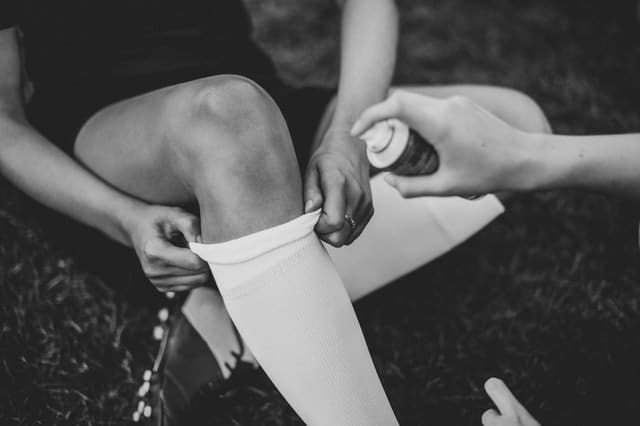
In conclusion, joint pain can be frustrating and debilitating, but many effective DIY remedies for joint pain can help alleviate pain and improve overall joint health.
These DIY remedies include passive treatments, regular exercise, a healthy diet, adequate sleep, and stress management techniques such as meditation. Incorporating these DIY joint pain relief remedies can help reduce joint pain and improve your quality of life.
However, everyone is different, and what works for one person may not work for another.
If you’re experiencing severe or persistent joint pain, it’s always best to consult a doctor or healthcare provider for personalized advice and treatment.
For example, a regenerative procedure such as non-invasive stem cell injection or PRP therapy will encourage your body to repair itself. I have used PRP therapy before and believe it is one of the most effective medical procedures.
Websites like Chronic Care of Richmond help you learn more about how these procedures can help you reduce joint pain.
However, using the DIY joint pain relief remedies listed above can likely make a big difference for you and help you live a pain-free life!
Read Next: How to Cure Jumpers Knee

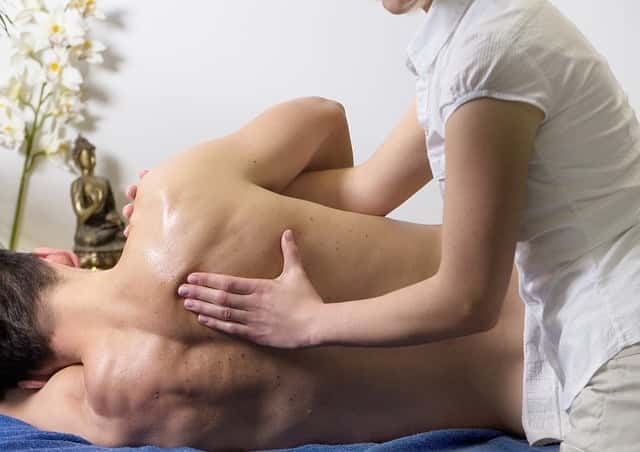






![DIY Joint Pain Relief Tips: How to Reduce Joint Pain at Home NatureWise Curcumin Turmeric 2250mg - 95% Curcuminoids & BioPerine Black Pepper Extract for Advanced Absorption - Daily Joint and Immune Health Support - Vegan, Non-GMO, 180 Count[60-Day Supply]](https://m.media-amazon.com/images/I/41TNBHN3P6L._SL160_.jpg)

